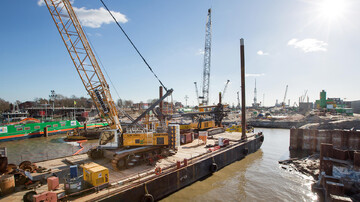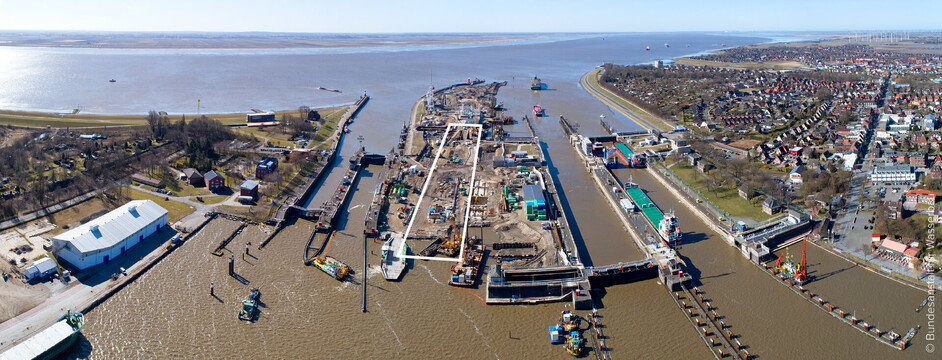
New construction of the 5th lock basin in Brunsbüttel, technical equipment
Starting position
The 100-kilometre-long Kiel Canal between Kiel-Holtenau and Brunsbüttel was opened in 1895 and is today the busiest man-made waterway for ocean-going vessels in the world. It connects the Baltic States with Western Europe and 30,000 cargo ships pass through it annually. The use of the canal shortens the vessels' journey by 460 km (250 nautical miles), which reduces CO2 emissions and saves time and money. This makes the throughput of the canal and the functionality of the locks on the Kiel Canal of great economic importance.
Until now, Brunsbüttel has had the Old Small Lock and the New Large Lock, each with two lock basins. The small lock was opened in 1895 and has two basins 125 m long, 22 m wide and 10.2 m deep. In 1914, the large lock (basin length: 310 m, basin width: 42 m, basin depth: 14 m) was completed. Since the motors and drives installed there are now more than 100 years old, technical problems and hence blockages tend to occur time and again.
In order to avoid these both large lock basins need to be completely repaired. This in turn means that shipping traffic will be blocked for several years. It was therefore decided to first build a 5th lock basin at Brunsbüttel and then modernise the two large lock basins one after the other, which will take at least three years each. This approach allows large oceangoing vessels to still pass through Kiel Canal. In addition, the Kiel Canal will be expanded further in the coming years by deepening the channel, changing the curve radii and building new locks to cope in future with the high volume of traffic. Completion of the overall “Kiel Canal Expansion” project is currently not planned before 2030.
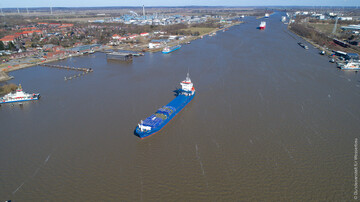
The Task
A 5th lock basin will be built on the lock island between the small and the large lock in Brunsbüttel. This project is currently the largest hydraulic engineering project in Germany. The lock basin will have a length of 360 m and a width of 45 m (effective length: 330 m, effective width 42 m). The width was chosen to be identical to the existing large lock basins so that if necessary, the lock gates (sliding gates) can also be used on these locks, which, in the long term, increases the availability of the locks and saves costs. The construction of three identical lock gates was commissioned for this reason, although only two are needed for the new lock. This will provide for the quick availability of the additional gate should one of the others gets damaged.
We have taken over planning the electrical engineering for this major construction site.
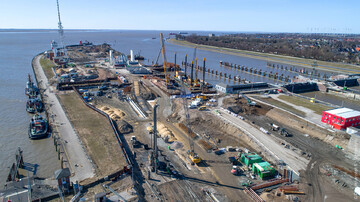
Services
Preparation: before the decision was made to build a new 5th lock basin in Brunsbüttel, a system study was undertaken in which our contribution involved addressing the area of technical electrical engineering equipment. Here we examined various conversion or replacement construction measures as well as several basic maintenance variants. We also performed the design and implementation planning and prepared the tender documents for the electrical equipment for the new construction of the 5th lock basin.
Planning services for the construction of the new 5th lock basin: part of the contract involved planning the medium voltage supply (20 kV), the low voltage distribution facilities, the power supply and the control of the gate drives, the contactor drives and the ballast system in the floating sliding gates. We also planned the control equipment using high-availability PLC controls and the connection to the existing lock control system. Our task also involved designing the lock lighting and the traffic signals for the shipping and for the road traffic crossing over the sliding gates. We also performed the planning for the video and loudspeaker equipment, the level measuring equipment and the earthing and lightning protection system and the preparation of the risk assessment in accordance with the Machinery Directive. We also planned the control devices for what we refer to as lifting pontoons for transporting the new sliding gates "over the waters". These lifting pontoons allow the sliding gates to be raised further so that the higher freeboard for the sliding gates required for sea transport is achieved.
Planning services for the existing locks in preparation for the construction work: the power supply and the control and instrumentation technology had to be reorganised in order to clear the construction site for the 5th lock basin. We provided the planning for this restructuring task, which included the following areas:
- Conversion of the central direct current supply to a decentralised supply and control of 6 sliding gates and 12 filling gates
- Adaptation of the north and south transformer stations
- Realisation of the 20 kV transfer station
- Installation of a fibre-optic network for decentralised control of the drives
- Restructuring of the medium voltage systems and the emergency power supply
- Planning of the emergency power supply over the 20 kV distribution ring inside the lock with an emergency power generator (1,500 kVA) to supply the consumers in the lock area
- Planning of reactive current compensation (300 kVA)
- Control technology: deployment of a Simatic-S7 H-System with approx. 30 substations distributed over the entire lock area
What is more, we also provided the planning services for the local control system (LCS) for the nautical and traffic systems along with the implementation planning and workshop plans (circuit diagrams, equipment parts lists, single-pole representations etc.) for all the nautical and traffic systems equipment on the five lock basins.
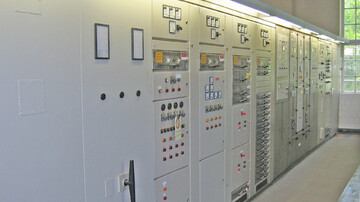
Challenges and special features
Before the decision was made to build the 5th lock basin, eleven variants for the basic repair of the large lock were examined and compared in a system study. Our task in this system study involved examining and comparing the electrical engineering trades.
Before the 5th lock basin was built, all the control and power supply cables for the entire lock system had to be laid. For this purpose, a new culvert was built below the lock system along with a new operations building. The location of the construction site on the lock island poses further planning and logistical challenges, since space on the site is very limited and all the necessary machines, materials and employees have to be brought to the island over the water. In addition, a large part of the island will have been dredged away by the end of the project, which is why large quantities of material have to be removed by boat. On top of that, both the tides on the Elbe and the flood protection that need be guaranteed at all times need to be constantly taken into account when planning and implementing the project.
Four filling channels with double lift gates driven by hydraulic cylinders are integrated into the new lock basin gates. Furthermore, installing a bilge and ballast system will make the gates floatable.
